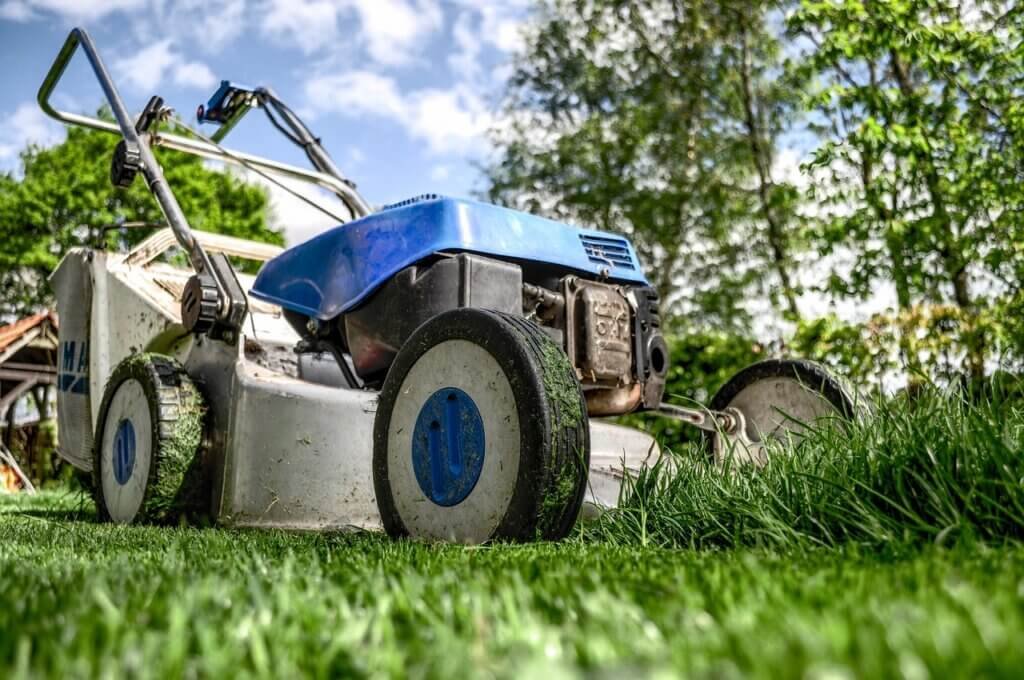Looking to freshen up your kitchen with some homegrown herbs? Look no further than a DIY vertical herb garden! In this article, you’ll discover step-by-step instructions on how to build a vertical herb garden that not only saves space but also adds a touch of greenery to any room. With just a few materials and a little bit of time, you’ll be on your way to enjoying fresh herbs right at your fingertips. So, roll up your sleeves and let’s get started on creating your own indoor oasis!
Materials Needed
To build your own DIY vertical herb garden, you will need the following materials:
Wooden pallet
The foundation of your vertical herb garden will be a wooden pallet. Choose a pallet that is in good condition and free of any rot or damage. The size of the pallet will depend on how many herbs you want to grow.
Screwdriver
A screwdriver will be needed to remove any protruding nails from the pallet and to secure it to the wall.
Drill
You will also need a drill to create the pocket openings in the pallet for planting the herbs.
Screws
Screws will be used to secure the pallet to the wall, so make sure you have an appropriate size for your wall type.
Plastic liner
A plastic liner will be used to prevent water from leaking out of the pockets and onto your wall. Choose a liner that is durable and waterproof.
Staple gun
A staple gun will be needed to attach the plastic liner to the pallet.
Herb plants or seeds
Select the herbs you want to grow in your vertical garden. You can choose to use either herb plants or seeds, depending on your preference.
Potting soil
Herbs require well-draining soil, so make sure to get potting soil specifically designed for herbs.
Watering can
To keep your vertical herb garden hydrated, you will need a watering can or a hose with a gentle spray attachment.
Wood stain (optional)
If you want to add a personal touch to your vertical herb garden, you can use wood stain to give the pallet a desired color.
Preparing the Pallet
Before you start planting your herbs, you need to prepare the pallet for its new role as a vertical garden. Follow these steps:
Inspect the pallet
Thoroughly inspect the pallet to ensure it’s in good condition and doesn’t have any signs of rot or damage. Look for any loose boards or protruding nails that will need to be addressed.
Remove any protruding nails
Using a screwdriver, carefully remove any nails that are sticking out from the pallet. This will help prevent any injuries and ensure a smooth surface for planting.
Sand the pallet
To avoid splinters and create a more polished look, lightly sand the pallet using sandpaper. Pay special attention to the edges and corners to make it safe to handle.
Staining the pallet (optional)
If you want to enhance the appearance of your vertical herb garden, you can apply a coat of wood stain to the pallet. This step is optional and can be skipped if you prefer the natural look of the wood.

Creating the Planting Pockets
The next step is to create the planting pockets on the pallet. Follow these instructions:
Marking the pocket locations on the pallet
Using a marker or chalk, mark the locations where you want to create the planting pockets. The size of the pockets will depend on the herbs you plan to grow, so make sure they are large enough to accommodate the plants.
Cutting the pocket openings
Using a drill with a hole saw attachment or a jigsaw, carefully cut out the marked pocket openings on the pallet. Take your time to ensure clean and precise cuts.
Sanding the pocket edges
After cutting the pocket openings, use sandpaper to smooth out any rough edges. This will prevent any damage to the herbs when they are planted and make the garden look more visually appealing.
Adding the Plastic Liner
To prevent water from leaking out of the pockets and onto your wall, you will need to add a plastic liner to the pallet. Here’s how:
Measuring and cutting the plastic liner
Measure the dimensions of the pocket openings on the pallet and use those measurements to cut pieces of plastic liner. Make sure the plastic liner is large enough to cover the entire back of the pallet.
Attaching the plastic liner to the pallet
Using a staple gun, carefully attach the plastic liner to the back of the pallet, ensuring it covers all the pocket openings. The plastic liner will act as a barrier, preventing water from seeping through.

Attaching the Pallet to the Wall
Now that your pallet is prepared and the plastic liner is in place, it’s time to secure the pallet to the wall. Follow these steps:
Choosing the location
Decide on the best location for your vertical herb garden. Consider factors such as sunlight exposure, ease of access, and aesthetic appeal.
Securing the pallet to the wall
Using screws and a screwdriver, attach the pallet securely to the wall. Make sure to use appropriate screws for your wall type. It’s essential to ensure a stable and secure attachment to prevent accidents or damage.
Planting the Herbs
With the pallet securely attached to the wall, you can now plant your herbs. Follow these guidelines:
Selecting the herbs
Choose the herbs you want to grow based on your preferences and the growing conditions in your area. Popular herbs for vertical gardens include basil, parsley, mint, thyme, rosemary, and cilantro.
Preparing the soil
Fill each pocket with potting soil, leaving a small gap at the top for watering. Ensure that the soil is loose, well-draining, and enriched with organic matter.
Planting the herbs
Carefully remove the herbs from their containers and gently loosen the roots. Place each herb into its designated pocket, ensuring that the roots are covered with soil.
Watering the herbs
After planting the herbs, give them a thorough watering. Water until you see it draining out of the pockets but make sure not to overwater. Check the soil moisture regularly and adjust your watering accordingly.

Caring for the Vertical Herb Garden
To ensure the health and vitality of your vertical herb garden, follow these care guidelines:
Pruning the herbs
Regularly prune your herbs to encourage bushier growth and prevent them from becoming leggy. Remove any dead or yellowing leaves to maintain plant health.
Fertilizing the herbs
Herbs grown in containers benefit from regular fertilization. Use a balanced, water-soluble fertilizer according to the manufacturer’s instructions. Be mindful not to over-fertilize, as this can harm the plants.
Watering the herbs
Check the soil moisture regularly and water your herbs when the top inch of soil feels dry. Be mindful not to overwater, as excessive moisture can lead to root rot. Aim to keep the soil consistently moist but not waterlogged.
Monitoring pests and diseases
Keep an eye out for common pests such as aphids, spider mites, and whiteflies. If you notice any signs of pest or disease infestation, take appropriate action using natural or organic remedies. Proper air circulation and good hygiene practices can help prevent pest and disease issues.
Harvesting and Using the Herbs
Enjoy the fruits of your labor by harvesting and using the fresh herbs from your vertical garden. Here’s what you need to know:
Harvesting the herbs
When the herbs have grown sufficiently, you can start harvesting by snipping off leaves or stems as needed. Harvest in the morning when the herbs have the highest concentration of essential oils for the best flavor.
Drying or preserving the herbs
If you have an abundant herb harvest, you can dry them by hanging bunches upside down in a dry, well-ventilated area. Alternatively, you can freeze or preserve the herbs in oil or vinegar for later use.
Using the herbs in recipes
Get creative in the kitchen and use your homegrown herbs to enhance the flavor of your favorite dishes. From adding fresh basil to your homemade pizza to infusing thyme into your roasted chicken, the possibilities are endless.

Troubleshooting Common Issues
If you encounter any challenges with your vertical herb garden, here are some common issues and solutions:
Herbs not thriving
If your herbs are not thriving, assess their growing conditions. Ensure they are receiving adequate sunlight, water, and proper drainage. If necessary, adjust the watering routine, improve the soil quality, or choose herbs that are better suited to your climate.
Overwatering
Overwatering can lead to root rot and other moisture-related issues. Ensure that the soil is well-draining and that you water the herbs only when necessary. Allow the soil to dry out slightly between watering sessions.
Underwatering
On the other hand, underwatering can cause your herbs to wilt and suffer from drought stress. Monitor the soil moisture regularly and water your herbs when the top inch of soil feels dry to the touch.
Pest or disease infestation
If you notice pests or signs of disease on your herbs, identify the problem and take appropriate action. Use natural remedies such as neem oil or insecticidal soap to control pests. For diseases, ensure good air circulation, practice proper sanitation, and consider removing severely affected plants.
Enhancements and Customizations
Once you have mastered the basics of building and caring for a vertical herb garden, you can explore various enhancements and customizations. Consider the following ideas:
Painting the pallet
If you desire a more vibrant or personalized look, paint the pallet with weather-resistant paint. Choose colors that complement your outdoor space or match your overall aesthetic.
Adding decorative elements
Enhance the visual appeal of your vertical herb garden by incorporating decorative elements. Hang fairy lights, add small ornaments, or install a chalkboard for labeling your herbs.
Integrating a watering system
For convenience and efficient watering, consider integrating a drip irrigation system into your vertical herb garden. This automated system will ensure that your herbs receive the right amount of water without the need for constant monitoring.
Using alternative materials
While wooden pallets are commonly used for vertical herb gardens, you can also explore other materials. Consider using repurposed crates, shoe organizers, or even PVC pipes to create your own unique vertical garden.
Building a DIY vertical herb garden allows you to grow fresh herbs in a limited space and adds beauty to your outdoor or indoor environment. With proper care and attention, your vertical herb garden will provide you with a bountiful harvest to enjoy in your culinary adventures. Happy gardening!



